Features of growing volzhanka dioecious and the rules of plant care
In every garden there are uncomfortable places: the north side of the courtyard, glades near trees with a persistent shade, areas moistened by close ground water. Volzhanka dioecious can grow in these places, the cultivation of which is not difficult and does not take much time. Other names for the plant are aruncus, tavolzhnik, goat's beard.
Volzhanka will save in other cases. For example, there are fewer and fewer blank fences between neighbors. You have to think about how beautifully and quickly to disguise the mesh or fence. Another trend of foreign gardening is the design of the coast near ponds and reservoirs.
Sprawling bushes with openwork leaves and panicles of inflorescences are found in nature on the edges, in the undergrowth, in light deciduous and mixed forests. Since the beginning of the 17th century, this perennial plant has been cultivated. Now popular because of its easy care, aruncus can be found in gardens and lawns in central Russia.
White and fluffy
Among shade-loving perennials, Aruncus is the tallest and most spreading plant. The bush is formed by feathery leaves on long sturdy petioles. Light fluffy panicles of inflorescences up to half a meter long consist of miniature white and cream flowers.
Aruncus blooms from June to late July. In female plants, the inflorescences are openwork, loose. Inflorescences of male flowers are denser, thicker. Flowers are small, 2-3 mm in size.
The lace of leaves and the smooth swaying of the inflorescences in the wind give rise to the feeling that the bush is engulfed in a soft diffused glow. The gloomy corner of the garden comes to life and pleases the eye.
Watering, fertilizing, pruning
The aruncus bush grows rapidly in size from early May to mid-summer, when the peak of flowering comes. It is desirable, but not necessary, to feed the plant once every 2-3 weeks. It is better to apply organic matter and mineral fertilizers in turn.
Young plants that are planted in pits with humus do not need feeding in the first year.
If there is not enough moisture, growth and flowering will slow down. In dry periods, care will take more time: both transplanted layers and adult plants need to be watered.
Faded panicles are cut off so that shoots and leaves are not crushed.
But now the flowering is over. Now one of the following can be added under the bush phosphorus-potassium fertilizers.
Many from one
There are three main types of breeding for aruncus:
- dividing the bush;
- planting cuttings;
- collection of seeds.
The division of the bush is carried out in September or early April, when the snow melts. An adult plant, preferably four or five years old, is dug up and divided with a knife. Each part should have at least two renewal buds.
Advice
The older the plant, the more problematic it is to divide. For lignified rhizomes of ten years old, you will have to use a hacksaw or an ax. You can dig such a bush with a pitchfork. If this is not possible, dig in from the side and separate the part. After dividing, fresh cuts should be lubricated with wood wounds or powdered with crushed charcoal, wood ash or sulfur.
When cuttings are cut off the apical shoots of short length. Rooting is possible in water, in a greenhouse or directly on the site, if the hole is filled with a mixture of humus and loose earth. The transplanted plant needs to be watered frequently.
Seed propagation is the most painstaking choice. At the tops of the female plants, small pink-brown seeds ripen. The cut panicles are placed in the bag with the inflorescence down. Sow in late autumn in boxes or in open ground at a distance of 15 cm from each other. Shoots appear in the spring. They are transplanted to the site at the end of the season.The pits are located at a distance of 70 cm to one meter. The next spring, the bush will begin to grow, but will bloom only after 3-4 years.
Nature has made sure that the perennial multiplies without human intervention. The rhizome grows every year and gives root shoots. And the ripe seeds fall into the ground and give new shoots, that is, self-sowing occurs.
Wintering is not terrible
By the fall, the inflorescences are usually cut off. If left, you can see changes from the color of baked milk to pale brown. Such an evolution of the state will perfectly fit into the now fashionable concept of a "wild garden".
By winter, the leaves dry up, the stems die off. Therefore, care includes pruning - hemp remains half a finger long.
Overgrown rhizomes endure even a frosty winter with little snow. Perennials are not afraid of the cold, but if a harsh winter is expected, the trimmed bush should be protected. Fell foliage, fir spruce branches or humus will do.
What is the plant afraid of?
Not winter frosts are terrible, but spring frosts. If young leaves or inflorescences hatch, they may freeze. There is no need to despair. Special care is not needed, the bush will recover from dormant buds.
The enemy of aruncus is the bright sun. If the plant is planted in an open area, the foliage turns pale, discolored, growth freezes, the inflorescences refuse to bloom.
The plant is resistant to disease. The sawfly poses a danger to the leaves. Its green caterpillars gnaw at the leaves from the back, leaving streaks first and then forming holes. Young leaves are eaten completely.
Advice
Digging, loosening, and weeding in summer and autumn will help to get rid of the sawfly. If the lesion is difficult to stop, you will have to apply spraying.
Aphids and mites also attack willingly, but do not bring such damage to the plant.
Not only beds and flower beds
Connection with wildlife, harmony and tranquility - these are the goals of a landscaped garden or a part of it.
Aruncus can be used in different ways:
- as a single bush that creates a spectacular white spot;
- with other perennials of contrasting colors in partial shade or shade;
- next to trees and shrubs, filling voids and creating a harmonious transition of levels and palette;
- in compositions with household items, stones, wooden elements, decorative garden decorations;
- to decorate the shore of an artificial or natural reservoir;
- as an unusual garden decoration after curly pruning.
The carved leaves of aruncus are beautiful in themselves, so even a non-flowering plant will decorate the garden.
Airy inflorescences, as an addition to the bouquet, replace the usual asparagus and gypsophila. But the plant will wither within three days. But dried flowers are effective and durable. During flowering, white, and in late autumn, brown branches of inflorescences must be cut off and dried without water in a dry room. You can hang or use an empty vase. A dry decorative bouquet, a panel, a picture made from natural materials - you can use the inflorescence in different ways.
Caring for the Volzhan dioecious is a grateful process, because it immediately responds to care: watering, fertilizing, transplanting. With simple care, this perennial will delight for many years.
Why do they love this plant? Unpretentiousness, fast growth, uncomplicated reproduction. Whirling butterflies attracted by the scent. And also a long flowering, the opportunity to simply admire, inhaling the tart smell of honey from the fluffy inflorescences-panicles.
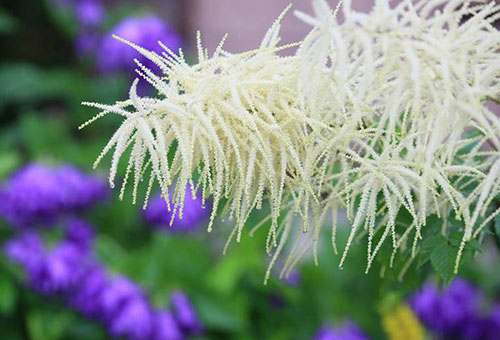
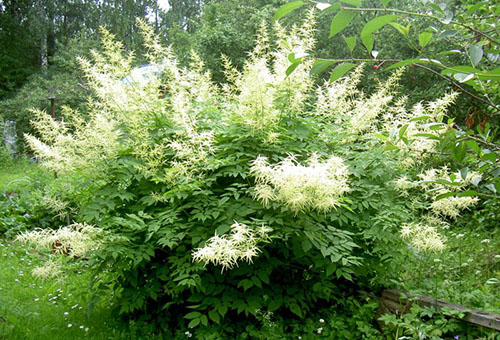
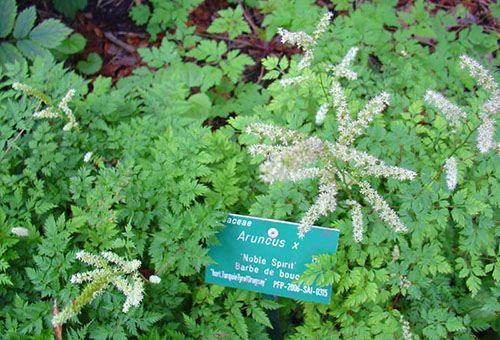
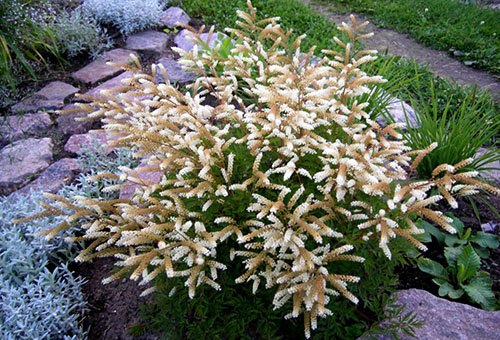
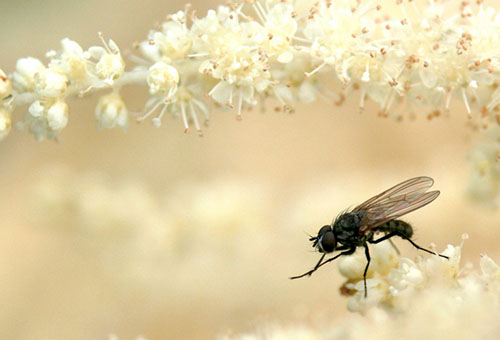
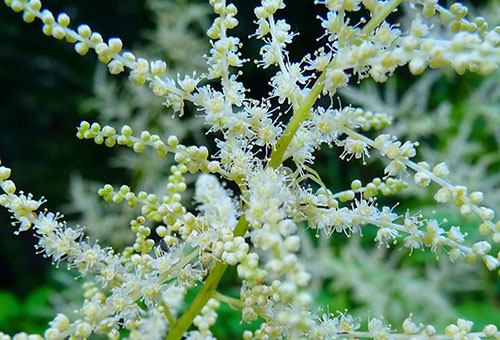


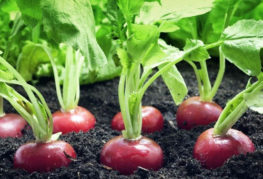
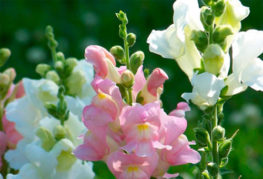
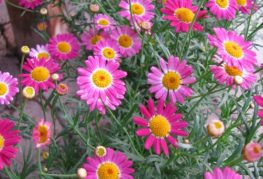
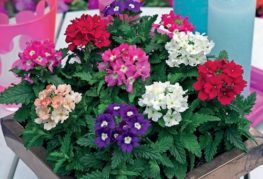
and will be published shortly.